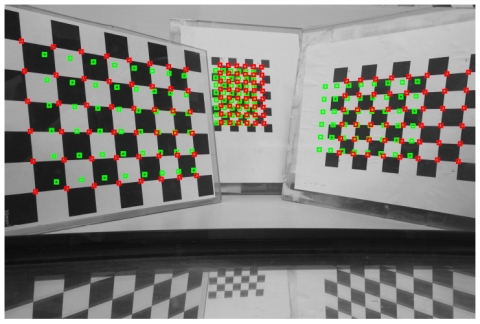TR2012-047
A Theory of Multi-Layer Flat Refractive Geometry
-
- , "A Theory of Multi-Layer Flat Refractive Geometry", IEEE Conference on Computer Vision and Pattern Recognition (CVPR), June 2012, pp. 3346-3353.BibTeX TR2012-047 PDF
- @inproceedings{Agrawal2012jun,
- author = {Agrawal, A. and Ramalingam, S. and Taguchi, Y. and Chari, V.},
- title = {{A Theory of Multi-Layer Flat Refractive Geometry}},
- booktitle = {IEEE Conference on Computer Vision and Pattern Recognition (CVPR)},
- year = 2012,
- pages = {3346--3353},
- month = jun,
- url = {https://www.merl.com/publications/TR2012-047}
- }
- , "A Theory of Multi-Layer Flat Refractive Geometry", IEEE Conference on Computer Vision and Pattern Recognition (CVPR), June 2012, pp. 3346-3353.
-
Research Area:

Abstract:
Flat refractive geometry corresponds to a perspective camera looking through single/multiple parallel flat refractive mediums. We show that the underlying geometry of rays corresponds to an axial camera. This realization, while missing from previous works, leads us to develop a general theory of calibrating such systems using 2D-3D correspondences. The pose of 3D points is assumed to be unknown and is also recovered. Calibration can be done even using a single image of a plane. We show that the unknown orientation of the refracting layers corresponds to the underlying axis, and can be obtained independently of the number of layers, their distances from the camera and their refractive indices. Interestingly, the axis estimation can be mapped to the classical essential matrix computation and 5-point algorithm [15] can be used. After computing the axis, the thicknesses of layers can be obtained linearly when refractive indices are known, and we derive analytical solutions when they are unknown. We also derive the analytical forward projection (AFP) equations to compute the projection of a 3D point via multiple flat refractions, which allows non-linear refinement by minimizing the reprojection error. For two refractions, AFP is either 4th or 12th degree equation depending on the refractive indices. We analyze ambiguities due to small field of view, stability under noise, and show how a two layer system can be well approximated as a single layer system. Real experiments using a water tank validate our theory.
Related News & Events
-
NEWS CVPR 2012: 4 publications by Yuichi Taguchi, Srikumar Ramalingam and Amit K. Agrawal Date: June 16, 2012
Where: IEEE Conference on Computer Vision and Pattern Recognition (CVPR)
Research Area: Computer VisionBrief- The papers "Connecting the Dots in Multi-Class Classification: From Nearest Subspace to Collaborative Representation" by Chi, Y. and Porikli, F., "Decomposing Global Light Transport using Time of Flight Imaging" by Wu, D., O'Toole, M., Velten, A., Agrawal, A. and Raskar, R., "Changedetection.net: A New Change Detection Benchmark Dataset" by Goyette, N., Jodoin, P.-M., Porikli, F., Konrad, J. and Ishwar, P. and "A Theory of Multi-Layer Flat Refractive Geometry" by Agrawal, A., Ramalingam, S., Taguchi, Y. and Chari, V. were presented at the IEEE Conference on Computer Vision and Pattern Recognition (CVPR).